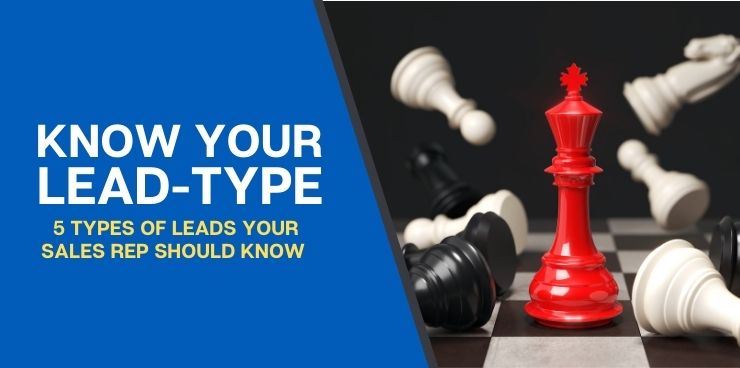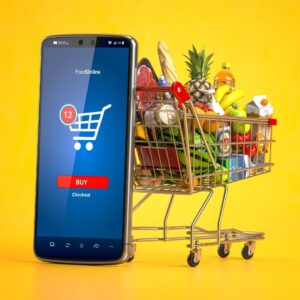Businesses with superior understandings of their target markets are poised to make better connections and more sales. Segmentation is becoming increasingly vital in accurately formulating marketing and sales strategies for particular customers.
In modern marketing and sales, this refined targeting does not stop at the buyer persona. For salespeople, tightly defining their customers extends to how they categorize their leads.
Breaking possible customers into smaller groups helps salespeople tailor messaging accurately and prioritize leads. From a basic standpoint, they need to know the difference in purchasing potential. Do they have a cold lead, a warm lead or a hot lead? Knowing this will help them direct their efforts toward more fruitful prospects.
Advanced analytics, evolving processes and better technology gives sales reps and managers more insight. With more refined sales lead scoring methods, reps can better define which lead to pursue and which to nurture.
To stay competitive, sales teams must identify different types of leads and strategize how to make a lead. Qualified leads may not always look similar across different types of sales, but there are essential principles to follow. This article will define ways to categorize types of leads and methods for generating workable sales leads.
 What is Sales Lead Generation?
What is Sales Lead Generation?
A sales lead is a person or business, usually, in your target market, that could be a potential customer. Sales leads indicate their interest in solutions or information provided by your business. Capturing that interest and obtaining methods for communicating with potential buyers is the essence of sales lead generation.
Sales generation is often a marketing function. Marketing communications, like ads and lead magnets, are created to draw in consumers from the target market. A sales team can also build leads through more interpersonal means on the internet, particularly through social media. No matter how they are generated, more leads equals more sales and faster quota attainment.
3 Main Categories for the Types of Leads
Not all leads are built the same, and their sourcing is a prime indicator of their intent to purchase. Being able to label them appropriately makes it easier for teams to focus their energy toward serious buyers. You may create custom systems for your own business, but, in general, sales leads fall into three categories:
Information Qualified Lead (IQL)
An information qualified lead (IQL) provides contact information in exchange for useful content. The IQL is at the initial research phase, so they may not be aware of your business and solutions.
Because of the relatively low involvement, IQLs are considered cold leads. Marketing automation is useful to keep your business in mind as they progress through the buyer journey. Automated emails are sent to communicate information about your company and its products, offering trials and useful content.
Marketing Qualified Lead (MQL)
When an information qualified lead displays particular interest in one of your products, they become a marketing qualified lead (MQL). An MQL may download a product brochure, revealing that they have a problem that your company could potentially solve.
This is a warm lead. MQLs can be offered more information on how salespeople can assist or they can be guided to a decision. Marketing may follow up with free trial offers, quotes, demonstrations or coupons.
Marketing and sales must work cohesively to determine which MQLs are worthy pursuits. With this type of lead, marketers need to be able to score them properly. This allows salespeople to take advantage of the right opportunities.
Sales Qualified Lead (SQL)
A sales qualified lead (SQL) is a hot lead, one that is on the verge of a decision. This type of lead needs to be prioritized, and the salespeople need to follow up quickly in order to close.
Most SQLs are legitimate qualified leads, indicating immediate pain points and needs that your solution satisfies. Content and follow-ups need to be geared toward closing, reinforcing your value and your solution’s effectiveness.
The 5 Types of Leads
The three qualified types of leads are generally accepted throughout the business world. However, not every type of lead emerges at the top of the sales funnel. Another perspective on lead prospects can be seen in the following five types of leads:
New Lead
A new lead is often the equivalent of a marketing-qualified lead. These customers exist in the business database through some interaction with your company.
New leads may have visited your website and downloaded material or input information for a lead magnet. It could be that they entered a contest at your store or left their information during a demonstration. With these pieces of information, you can begin introducing your business and solutions.
Working Lead
Working leads are actively engaged in conversations with a business. These potential buyers may be members of an email list or a follower on social media. Salespeople may also be in active talks with leads in this stage.
 Nurturing Lead
Nurturing Lead
Nurturing leads can emerge from the middle of the funnel or even after a close. They may have shown some kind of interest in your products but do not have a current interest in buying.
Abandoning uninterested leads can leave money on the table, so these leads are instead put into a nurture campaign. They may receive regular follow-up for newsletter releases, information offers or product launch announcements.
Nurturing leads maintains a relationship, keeping them informed and connected to your brand. When done effectively and considerately, nurturing will make you a top choice when the lead is ready to buy.
Unqualified Lead
An unqualified lead is one that is not interested in your solutions and has no clear indication of future potential. It is best to root these leads out as early as possible, preferably before salesperson interaction.
Leads can become unqualified at later stages too, so salespeople must be thorough in their initial conversations. Determining a good or poor fit early saves time and effort for both the sales rep and the prospect. You can retain the potential for future business by respecting the prospect’s needs and not trying to force decisions.
Qualified Lead
A qualified lead can show varying levels of interest, as seen in the difference between information and sales qualified leads. However, a qualified lead is commonly regarded as a person or company with a need and an interest in your solutions. They have the budgetary capability, urgency and desire to take advantage of your services.
How to Generate Sales Leads in Your Small Business
Knowing the different types of leads will do no good if you do not know how to attract them. A consistent flow of quality leads defines a business’s growth. Small businesses looking to compete need a system for capturing fitting leads and managing them in the sales process.
With a proper focus, you can make your lead generation efforts more practical. Your final strategy will be a custom blend of tactics finely tuned to earning the right type of leads. However, the following are some key tips that any business can use to create a strong list:
Define Your Target Market
The first step in generating leads is determining the types of lead that are worth pursuing. Who could benefit from your solution? Out of those, who has the means to receive your product or service?
You need to clearly identify the characteristics of the most profitable customer. Where do they live? Why do they need you? What are their demographic, psychographic and behavioral traits?
When you can describe your customer in more detail, you become better able to reach them. You will know where they live in real life and online so you can place your message. You will understand their values and attitudes, so you can choose your words and frame your pitch. A clear vision of your target market can answer most of your marketing questions moving forward.
Choose a Blend of Promotional Tactics
The internet has provided more promotional opportunities, but this also makes it harder to pinpoint the most effective methods. Starting online gives you inexpensive but highly effective avenues to broadcast your message. Small businesses can quickly establish a presence and use intuitive online tools to continually evolve their strategy.
Social media and content can help you expand your reach and spark conversations with your ideal customer. For a new brand trying to raise awareness, you can start online ad campaigns or host events. There is no shortage of powerful techniques to combine into a cohesive marketing plan.
Implement a Sales Funnel
Effective promotion raises awareness and sparks interest but you need a bridge to close deals. Leads need to be injected into a sales funnel, the formal process of guiding leads to a close. These are managed by salespeople in their CRM, letting them categorize, track and follow up with customers as needed.
Creating a list for your sales funnel is attained through engagement. With your content, advertising and other marketing material, you can earn customer information to start the relationship. By offering value, such as a discount, demo or exclusive white paper, you can generate a host of warm leads.
Use an Email Newsletter to Build Relationships
Email continues to be one of the most effective methods of generating quality leads. Marketing automation makes it easy to create follow-up email schedules and create ongoing value. The problem nowadays is finding the type of valuable content to send out on a regular basis.
An email newsletter is particularly handy in this case. Newsletters are relevant, value-laden and predictable, making them more agreeable to consumers and helping maintain your following. The following are some key tips to get the most out of your email newsletter:
- Adhere to guidelines in the CAN-SPAM Act. This act was created to protect consumers from unwanted emails. Requirements include emailing only members who subscribed, ensuring they knowingly opted in and giving them the option to unsubscribe.
- Try to personalize your emails as much as possible. If you offer tightly targeted content, you stay relevant and increase your click-through rates.
- Don’t forget your CTA. Newsletters, like any marketing email, need to give customers a next step. Add your call-to-action at the end or throughout your newsletter. You can try asking them to get more information, sign up for events or buy your product.
- Continually test your newsletter and optimize accordingly. Experiment with your newsletter to see what keeps your readers interested. Try different subject lines, layouts or CTAs to find what grabs attention and converts.
Leverage Social Media to Connect and Engage
Social media is amazing for brands and individual salespeople trying to generate leads. Businesses can follow their target customers to Facebook, Twitter, Instagram or LinkedIn to start engagement.
When you create a social media profile, you have a way to attract leads with content and personality. You can lead followers to your website and offer special deals to generate different types of leads. Your brand also benefits when you engage customers in conversations, learning about them and responding to concerns and desires. The efforts you make in your social media can greatly influence your reputation, inspiring more word-of-mouth and organic traffic.
From a salesperson’s standpoint, Facebook, Twitter and especially LinkedIn can connect you with valuable customers, influencers and industry leaders. You can offer content, join groups to find like-minded individuals and leverage your personal network to earn business.
Understanding the types of leads and how to generate them builds efficiency and effectiveness into the sales process. Finding the right formula, however, often takes professional customization. The Selling Revolution is a group of marketing and sales experts dedicated to automating success for our clients. We work closely with businesses to refine lead generation strategies that play to their strengths and maximize revenue. If your company is ready to handle more leads and more business, start the conversation with our team today.


 What is Sales Lead Generation?
What is Sales Lead Generation? Nurturing Lead
Nurturing Lead